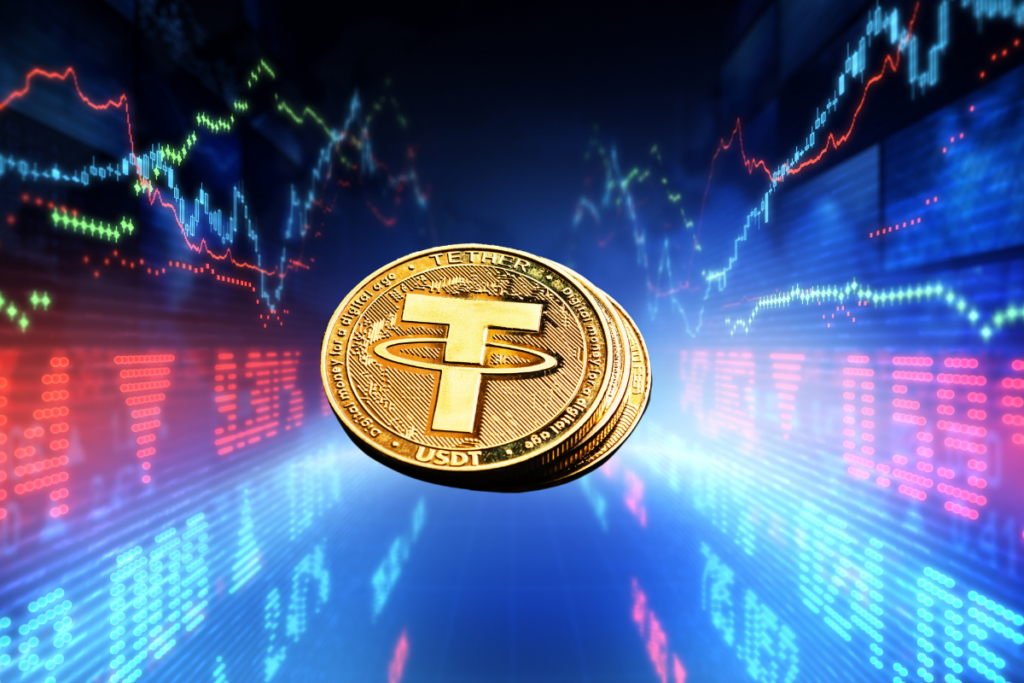Experts Analyze Factors Behind Decline of Second-Largest Stablecoin, USDC
Crypto News – Amidst what appears to be a downward spiral for the second-largest stablecoin in the market, experts are delving into the factors that are dragging down the digital dollar.
The market has not been kind to the second-largest stablecoin, USDC, as its market cap, associated with Circle, has reached a low point not seen in two years.
According to CoinGecko, the current market cap is slightly below $26 billion, a significant drop from its peak of $56 billion back in June of the previous year.
Meanwhile, in contrast, Tether’s USDT has been making strides and recently achieved a new all-time high in terms of market cap, soaring to $83 billion.
Experts have analyzed the situation and put forth four primary reasons contributing to the decline of the USDC token.
The most formidable challenge hampering USDC’s performance is likely the substantial depegging incident that unfolded earlier in the year. Against the backdrop of a regional banking crisis in the United States, Circle disclosed being entangled with approximately $3 billion in the turmoil, consequently causing the stablecoin’s value to plummet to $0.87.
21Shares analyst Tom Wan expressed, “The most significant factor is that USDC has not yet rebounded from the banking crisis. By comparison, USDT exhibits lower volatility as it remained less affected by the banking turmoil.”
Another factor is the gradual increase in interest rates, as explained by Garett Jones, the chief economist at Bluechip, a non-profit platform that rates stablecoins.
Jones stated, “Holding onto USDC currently translates to forsaking a secure 4% to 5% annual return. With high interest rates for bank accounts and certificates of deposit projected to persist well into 2024, the cost of maintaining funds in USDC continues to rise.”
A crucial distinction also lies in the issuance models of each stablecoin.
Evgeny Gaevoy, CEO and founder of the market maker Wintermute, took to Twitter to suggest that people are more inclined to sell USDC compared to USDT due to the apparent difficulty of “burning” USDT during weekends. He pointed out that no new USDT is produced during those times. Gaevoy added that Tether enforces both a 0.1% minting fee and a 0.1% redemption fee.
Gaevoy also elaborated to Decrypt that the market utilization of these two stablecoins impacts their respective market caps. He highlighted that among the two predominant use cases for digital dollars—acting as collateral for perpetual trading and providing non-volatile liquidity—USDC is primarily tailored for the latter purpose.
He elaborated, “USDC mainly serves as a liquidity buffer in the decentralized finance (DeFi) space, while Tether is predominantly employed as collateral for perpetual contracts. Thus, it’s logical that USDC’s value is decreasing while Tether’s remains relatively steady. Additionally, the decline in perpetual trading volumes is less pronounced compared to spot trading volumes.”

However, does this signify the conclusive end of the stablecoin competition?
Not exactly.
Circle is vigorously striving to regain traction and expand the reach of its digital dollar.
When questioned, a Circle spokesperson directed Decrypt’s attention to a recent Bloomberg article that outlines the company’s financial reserves and shared two relevant tweet threads.
These threads revolved around two significant announcements.
Circle recently revealed an integration with Shopify, allowing merchants to embrace “almost free payment acceptance” by employing the stablecoin. Furthermore, the company disclosed its intention to extend the token’s compatibility to six additional blockchains, including the highly anticipated Base network.
Furthermore, the affiliation between Circle and Coinbase extends beyond the layer-2 network. Coinbase has recently acquired a minority stake in Circle, leading to the dissolution of the Centre consortium formed by the two entities.
Irrespective of the victor in this scenario, Garett Jones of Bluechip emphasized that, thankfully, a complete catastrophe has been averted, which can be considered a positive outcome.
He commented, “Perhaps the true revelation in this situation is that during the crypto market downturn, major asset-backed stablecoins have managed to downsize, liquidate, and redeem their coins without inflicting substantial hardships on their customers. While it doesn’t guarantee the future, it’s certainly a positive sign.”
















1 Comment